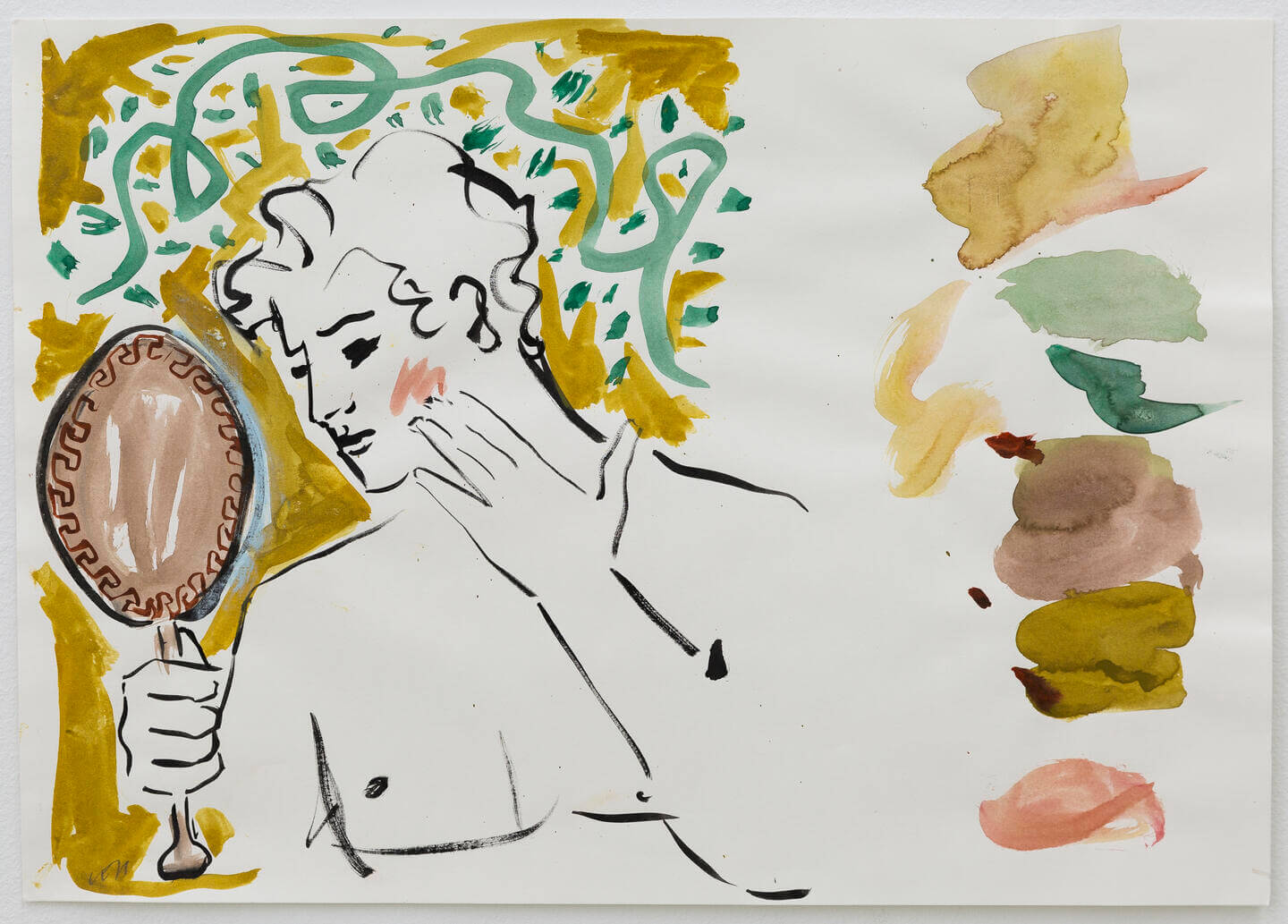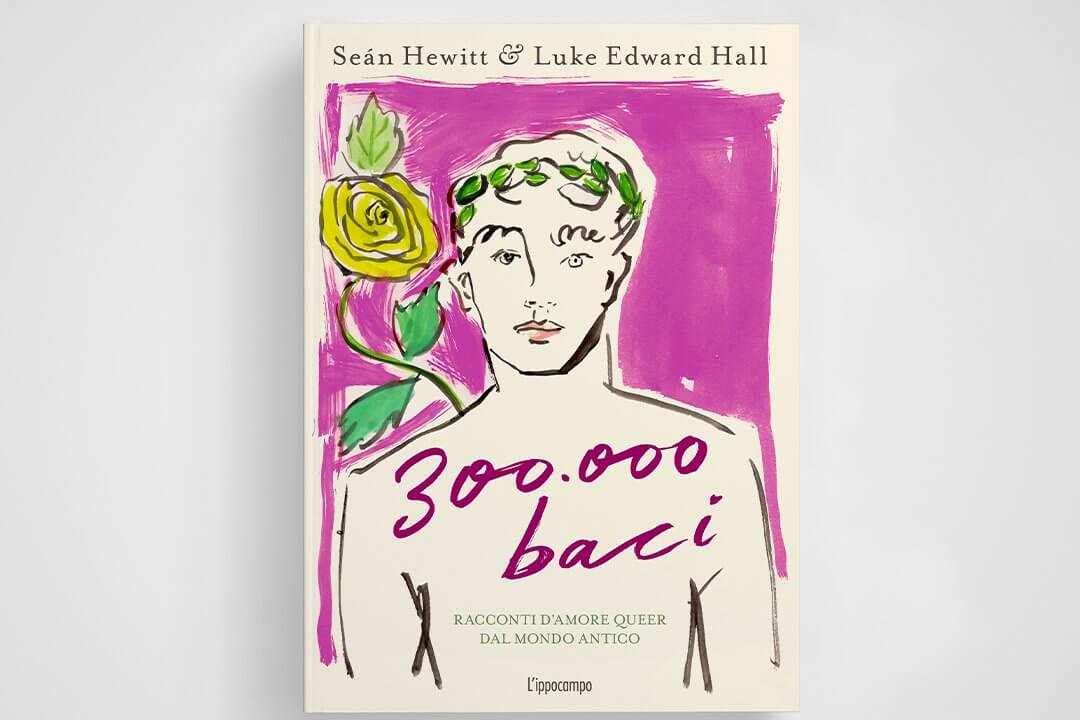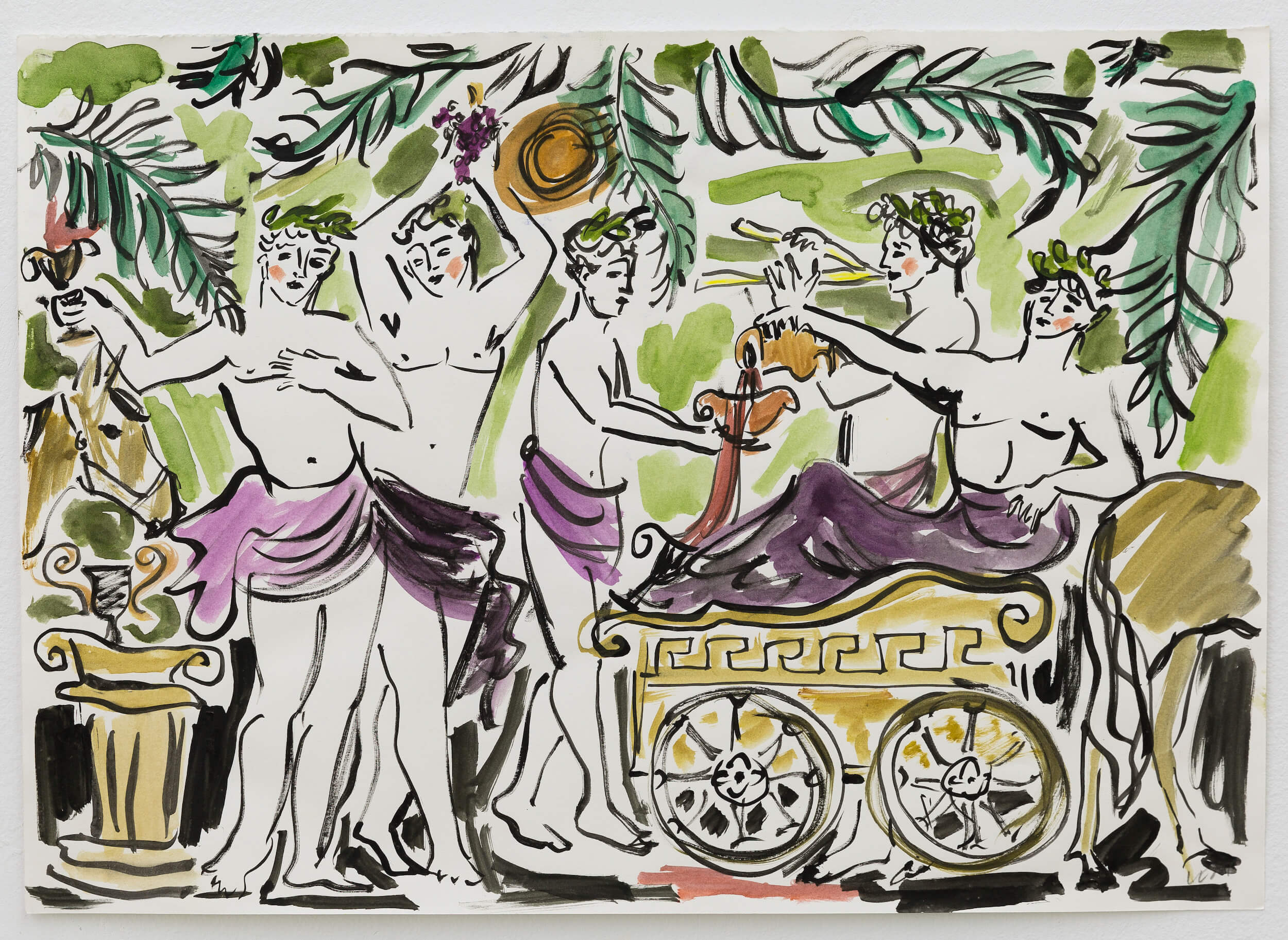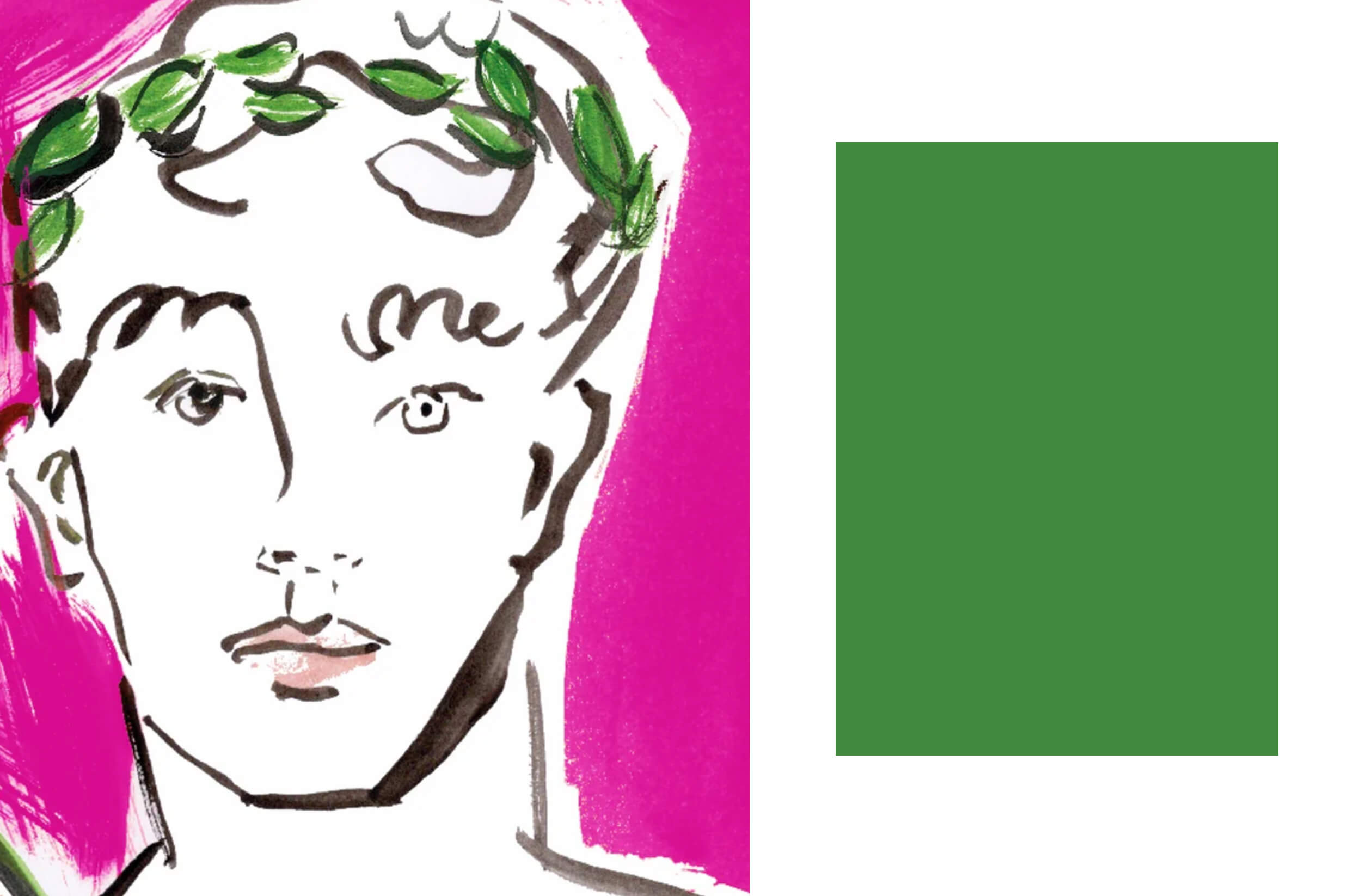Love has no space, no time, and, above all, no gender.
A feeling to be felt, transcribed, and handed down: with all the typical beauty of those kisses that make our hearts beat even just through memories, the poet Seán Hewitt and the illustrator Luke Edward Hall combine their creativity to give life to “300,000 kisses,” a collection of ancient poems dedicated to queer love.
Luke’s vibrant brushstrokes meet Seàn’s contemporary words to tell an emotion as ancient as it is current: freedom and, above all, the freedom to love.
When and where does this book come from? How was the idea for this anthology born?
L: It was born almost three years ago when Richard Atkinson, the publishing director of Penguin, wrote to me about the idea of creating an anthology about the ancient world. Quickly, it became clear that it should focus on queer stories. Initially, we discussed how to make it work, and Richard proposed new translations of the texts. Seàn then joined the project, and we began working on it.
How did you carry out the research and selection of these queer love stories from ancient Greece and Rome?
S: We had assistance at Penguin from three or four Classics experts who helped us navigate the texts. We aimed to present a diverse range of love stories – some tragic, happy, disturbing, sometimes angry or passionate. We wanted a mix, selecting from different texts to ensure it wasn’t limited to well-known stories. We also included lesser-known stories, such as spells or graffiti from Pompeii. We gathered the 40 extracts early in the process, with me providing translations for Luke to illustrate. The book evolved over a couple of years through a collaborative conversation.
Seàn is a poet, and Luke is an artist: how did you combine your two creativities to give life to a different kind of art, that of words?
L: The process unfolded over a few years and was enjoyable. The idea of new translations breathed fresh life into the stories. As I received the translations, I could visualize how they would complement my drawings, creating a collaborative process.
S: When I first saw Luke’s illustrations, I responded to the color, vibrancy, and energy, setting the tone for my translations. We aimed for a balance of contemporary and classical, avoiding a too-old-fashioned feel. The book’s creation was more like a continuous conversation than separate writing and illustration phases.

This book proves once again how the past never ceases to amaze us, showing the powerful bond between love and freedom. What surprised you the most during the journey of writing and illustrating this book?
S: Writing the book surprised me, especially seeing familiar characters under different lights and discovering stories I hadn’t read before. The queer frame had sometimes been omitted from well-known stories, and restoring that was exciting. The vast variety of the classical world was also surprising, and we aimed to retain that sense of joy and surprise in the book.
L: Artistically, discovering new stories and giving life to characters in a new way was exciting. The mix of long stories and fragments added depth. My favorites were often the four-line fragments.
The tales of this book are moving, strong, and important. What would you like to say to readers approaching their beauty for the first time and, for those familiar with some of these classics, discovering them from a different point of view?
S: For first-time readers, we hope they inherit a personal mythology, offering new ways of thinking and belonging in the world. The book challenges the perception of classics as distant and upholding a single worldview. For those familiar with classics, we hope to provide a different lens, sparking new questions about the use of classics and the stories we know.
L: We want to shed new light on classics, making them feel contemporary and relatable. It’s about creating a sense of belonging for those who may not know much about these queer characters.
What’s your favorite tale in this book?
S: I love the small fragments at the start and end of the book for their understated beauty. The “Protrepticus” by Clement of Alexandria surprised me with its frankness and tenderness. It captures the tone of the book well.
L: My favorites change, but I enjoyed drawing the cinematic ones with vibrant natural settings, like the Alexander the Great procession from “An Empress’ Kiss”. The use of color was crucial in capturing the atmosphere.

“It’s about creating a sense of belonging for those who may not know much about these queer characters.”
“Three hundred thousand kisses are not close to enough,” says Catullo. What does desire represent to you?
S: This book made me contemplate desire as a forward-moving journey. You can only desire something you don’t have, and when you obtain it, the desire transforms. Desire propels change and keeps everything moving.
L: There was one tale I really loved, “Imprisoned”: I loved its idea of desire for something that’s not perfect; I find it very touching that in the people we love perhaps it’s the imperfections that we love most of all.
What’s the book on your nightstand right now?
L: I’m reading a book about a Cornish surrealist painter from the 20th century who moved to Como and created paintings inspired by the landscape.
S: I’m reading a yet-to-be-released novel by Hisham Matar called “My Friends,” exploring friendship among exiled Libyans in England during Gaddafi’s time.
What’s your favorite book?
L: “The Secret History” by Donna Tartt. It transformed me as a teenager, and I appreciate Tartt’s brilliant storytelling.
S: “The Woman in White” by Wilkie Collins. It’s a gothic novel with a strong Italian component, and I enjoy its courtroom-style narrative.
What’s the last thing you discovered about yourself?
S: I discovered I really like the combination of tuna and veal, as in “vitello tonnato.”
L: I discovered I enjoy zabaione, which I wasn’t sure about before.
What’s your happy place?
L: My home in the Cotswolds, especially my garden.
S: A quiet pub in the village where I grew up, by the churchyard, with a book by the fire.

Thanks to Ippocampo Edizioni





